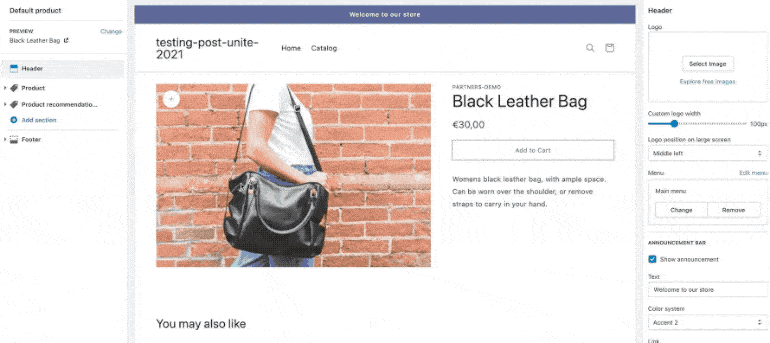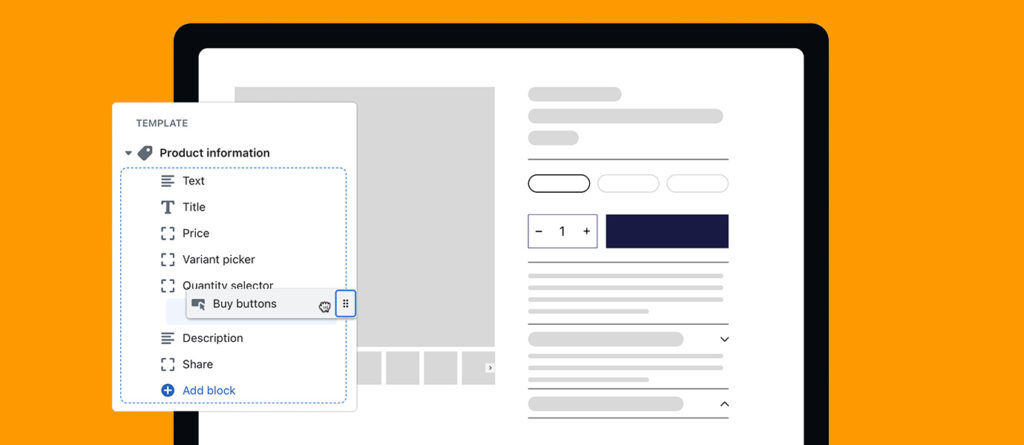Shopify’s launch of their Online Store 2.0 has led to an influx of questions from brands: Should they transition from the traditional Shopify platform to the updated version? Instead of giving you a black-and-white answer, let’s dive deep into the facets of Shopify 2.0 and discuss its benefits, features, and potential considerations to help you make an informed decision.
Delving into Shopify 2.0: What’s New?
Before pondering over the migration decision, it’s essential to understand the transformative changes Shopify 2.0 brings.
Enhanced Storefront Customization
Shopify 2.0’s Sections Everywhere facilitates merchants in using content modules for crafting any page on their website, not just limiting them to the homepage. This feature, combined with the added metafields, offers brands the flexibility to insert custom content, from sizing charts to ingredient lists, on any page or section, without being dependent on developers.
Simplified App Integrations
Say goodbye to hard-coded app integrations. Shopify 2.0 introduces app extensions that make installing and removing apps neater and more straightforward. This change also ensures minimal effect on the site’s speed from these integrations.
Streamlined Checkout Process
The checkout experience can be tailored to resonate with your brand’s look and feel. Moreover, the seamless integration of apps, like upsell options, and a unified native subscription checkout prevent redirecting customers to external platforms.
Optimized SEO Features
With the flexibility to add metafield content across modules and pages, Shopify 2.0 gives search engines richer product information. This enhancement is bound to refine your store’s SEO strategy and boost sales.

Key Considerations Before Making the Shift
The intricacies of your current Shopify setup will influence the migration process’s complexity. Here are some crucial points to reflect upon:
Current Site Performance
A sluggish site can deter potential customers. If your site’s performance is less than stellar, upgrading to Shopify 2.0 might be the answer. However, evaluating and optimizing your existing site might suffice to enhance its speed and conversion rates.
Custom Theme Considerations
Migration becomes intricate with a custom theme. If you’ve personalized your Shopify theme, you’d need assistance from a developer or your agency for the transition.
Theme Compatibility with Shopify 2.0
It’s crucial to ensure your theme’s compatibility with Shopify 2.0. If not custom, your theme still might require updates. Thankfully, by the end of 2023, Shopify mandates all themes in their Theme Store to be 2.0 compliant.
App Compatibility Checks
Shopify 2.0 might not support every app you currently utilize. Ensure your essential apps are compatible, or scout for alternatives. Again, by the end of 2023, all Shopify’s App Store apps should be compatible with version 2.0.
The Big Question: Stick with Legacy, Migrate, or Go Headless?
If your current Shopify setup serves you well and managing it feels effortless, perhaps there’s no pressing need for the switch. But if challenges persist, and you’re seeking advanced solutions for your eCommerce platform, it’s time to evaluate whether migrating to Shopify 2.0 is apt or if starting afresh with a tailor-made 2.0 theme or even a headless setup is more advantageous. To delve deeper, explore our article on the comparison between Shopify 2.0 and headless configurations. And if you need further guidance, we’re here to help!

